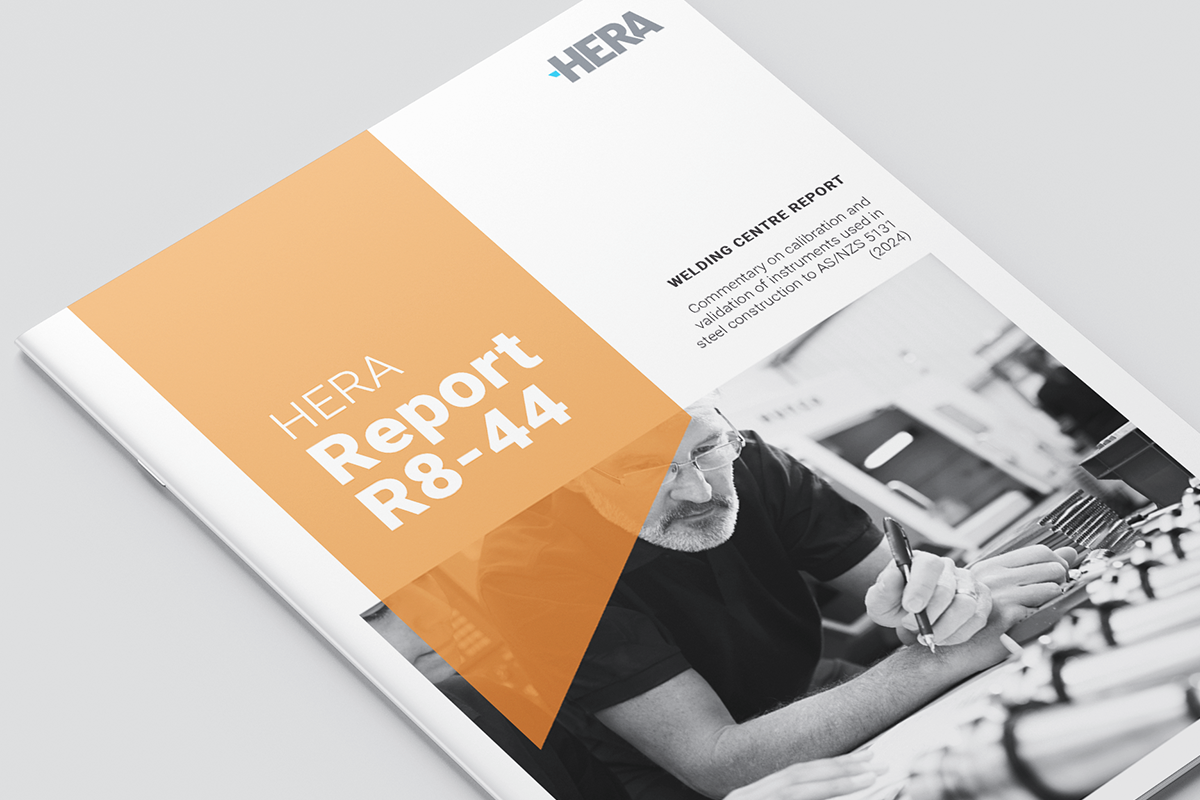Your cart is currently empty!


Resource: New calibration guide available
HERA is pleased to advise that our Fabrication 4.0 team has released a new technical guide on calibration protocols for devices and equipment to support quality steel construction.
The intent of this technical report is to give commentary on calibration and validation approaches to comply with quality requirements of AS/NZS 5131, in particular, on two critical technical aspects frequently overlooked – the concept of measurement uncertainty and recognising the cumulative effect of tolerances.
Background for this technical report
For those in the construction sector, the fabrication and erection requirements for steel structures are defined in AS/NZS 5131. This standard makes references to a range of supporting standards including those covering calibration of equipment.
Calibration and validation processes are important aspects of the steel construction industry. Whether ensuring the proper thickness of steel components, the correct alignment of structural elements, tensioning of bolts, and checking of welding parameters, calibration is required to ensure that critical measurements and inspections are executed with required consistency.
Calibration is the process of fine-tuning and adjusting measurement equipment to a known standard or reference to ensure its accuracy and reliability. It ensures that the equipment consistently produces measurements that are traceable to a recognised standard. On the other hand, validation pertains to the assessment of an entire process or system to determine whether it meets specific requirements and produces results within acceptable limits performed by written validation procedures. The primary similarity between the two lies in their shared objective of ensuring accuracy and reliability.
It is essential to emphasise two critical technical aspects frequently overlooked: understanding the concept of measurement uncertainty and recognising the cumulative effect of tolerances. Measurement uncertainty recognises that no measurement is entirely error-free; there is always some degree of inherent imprecision in any measurement process. Tolerance accumulation may become significant for multiple measurements and adjustments made throughout the fabrication processes. Each measurement of fabrication and erection processes is assessed for its own tolerances, and when these are combined, they can lead to a noticeable deviation in the final dimensions of a structure.
Why is this technical report important for steel fabricators?
Standards related to calibration and validation in the steel structure industry may vary depending on the context and the aspect of the industry referring to and can cover various aspects of construction and engineering, including materials, design, fabrication, and quality.
Whilst AS/NZS 5131 does not solely focus on calibration and validation, it defines quality requirements, which means adequate calibration and validation practices are required to achieve compliance.
Details about calibration protocols can be found in HERA Technical Report R8-44 2024: Commentary on Calibration and Validation of Instruments Used in Steel Construction to AS/NZS 5131.
